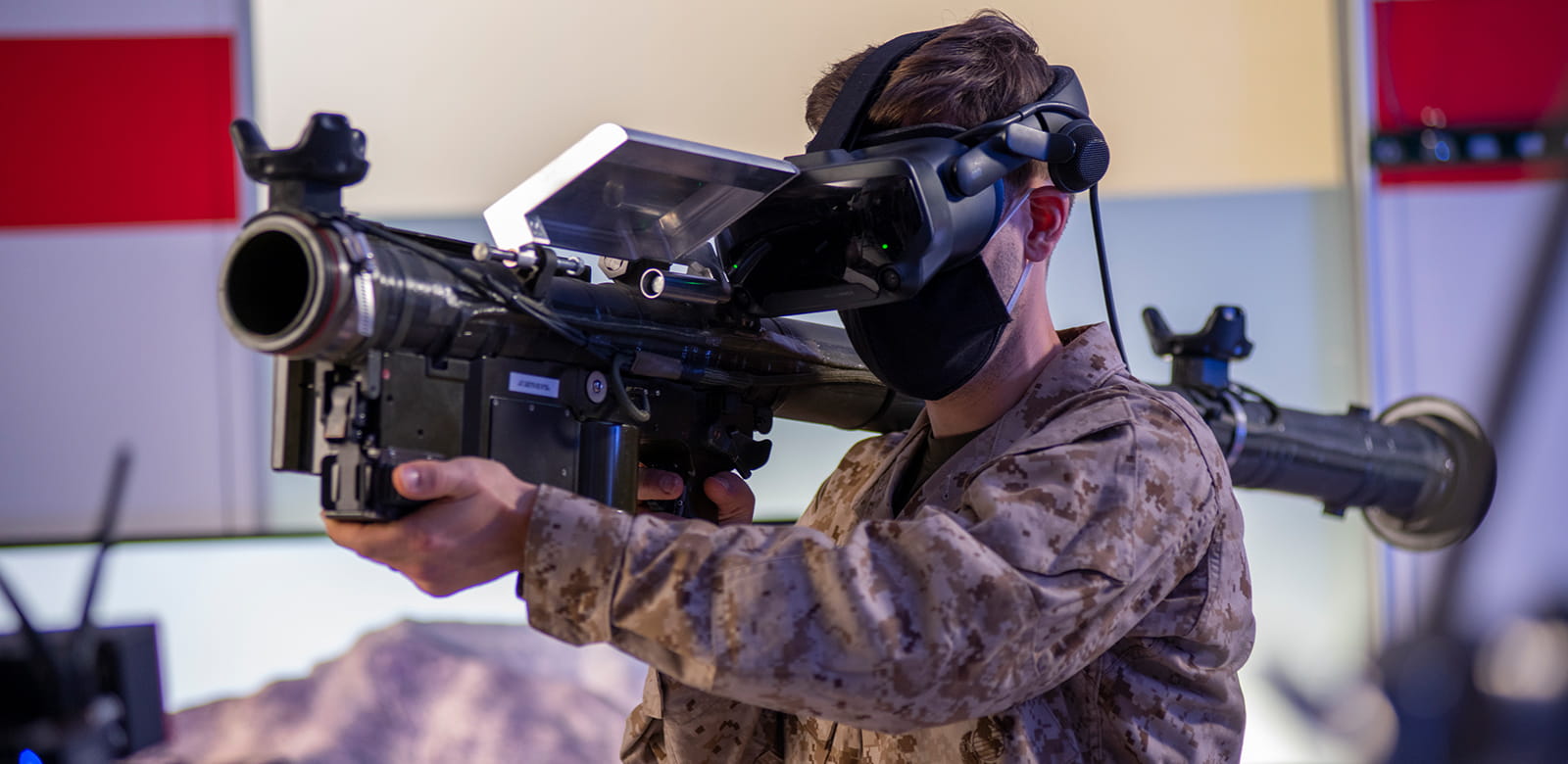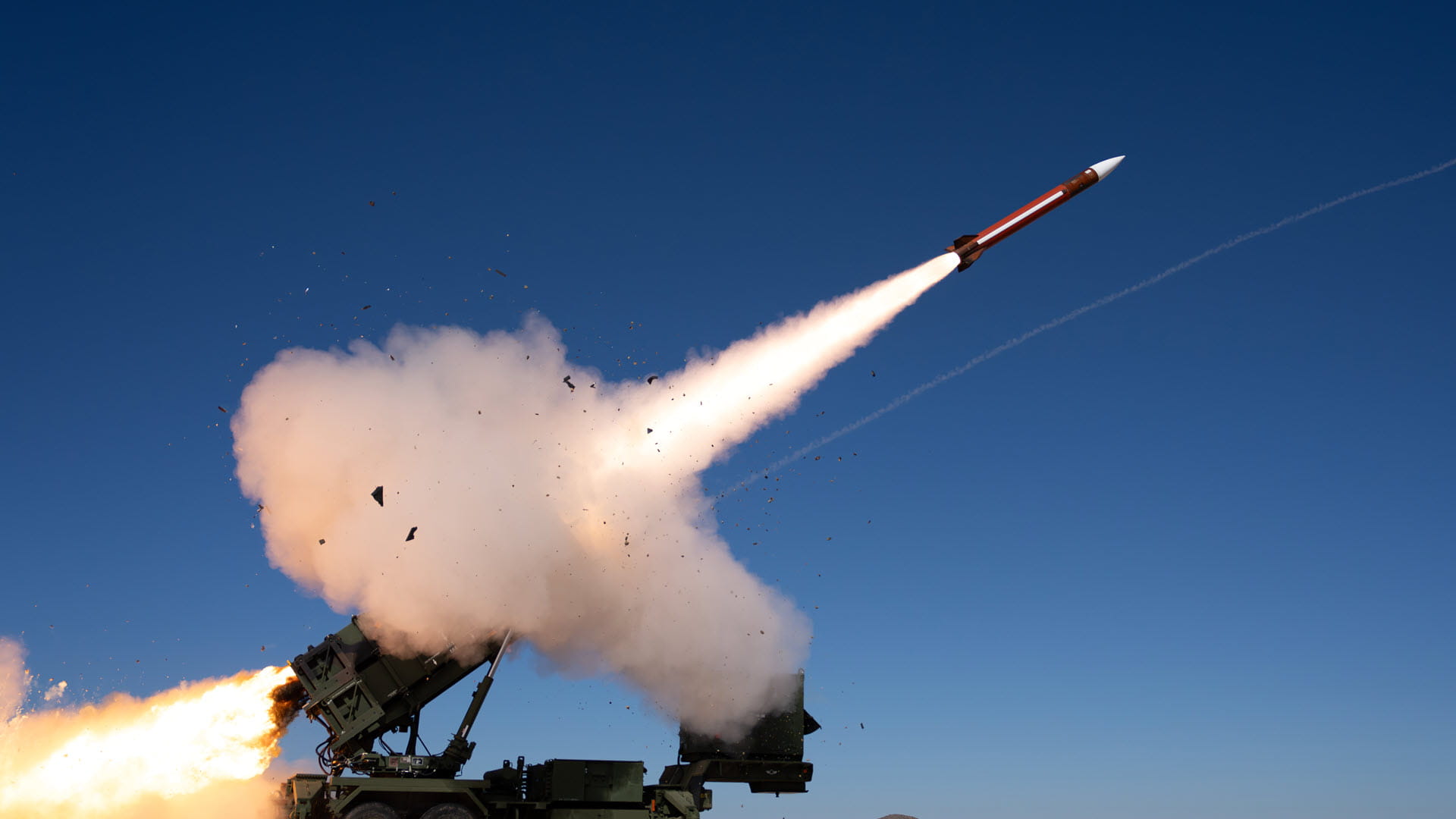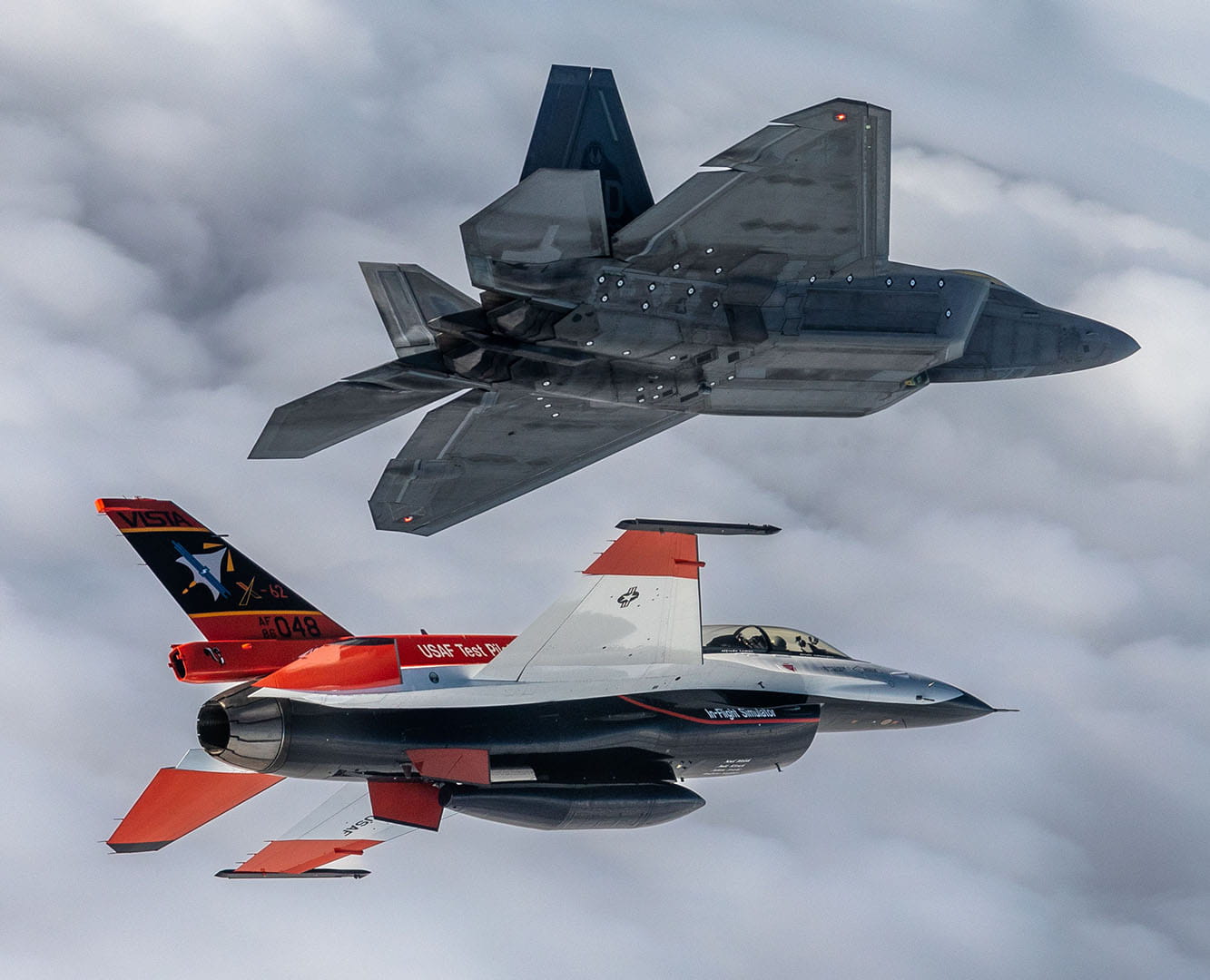Mission training on a digital battlefield
Stinger Virtual Trainer offers troops a hyperrealistic experience
The gunner puts on a virtual headset that takes him from an ordinary office building to a vast, rugged desert. With a missile launcher on his shoulder, he scans the horizon. The sun is blinding. It will affect his aim.
His assistant gunner, right there beside him in the virtual world, tracks a target. An instructor watches over them both.
An adversary’s helicopter comes into range. The gunner takes aim and fires. He hears the roar of the rocket engine and watches as his shot, a Stinger missile, pursues the target.
The gunner has just demonstrated the Stinger Virtual Trainer®, a new system from Raytheon Technologies that uses recent advancements in virtual reality and gaming to provide military agencies with a safer, cheaper and easier way for troops to get their reps on the Stinger missile launcher, a man-portable weapon used to defend against a range of airborne targets.
“We are using the most advanced training technology to give Stinger gunners an unfair advantage on the battlefield,” said Greg Toy, who leads a technical team of experts at Raytheon.
Close to the real thing
Accuracy was the priority throughout the system’s development. The launcher weighs and feels the same as an actual Stinger weapon system.
The virtual missiles and targets, programmed with decades’ worth of unclassified data from real-world Stinger launches, behave as they do in the field, whether that’s a wooded area, a rocky desert or an Arctic plain. And the engagement sequence comes straight from the military’s official gunner’s handbook.
The trainer is built on Raytheon Technologies’ Instinct® common operating environment, which replicates realistic terrain and targets, and allows service members to train cooperatively and remotely from anywhere in the world. Raytheon Intelligence & Space builds the software that connects the system’s hardware.
“Our trainer allows users to run through realistic scenarios they are likely to encounter in the real world, and they can build their confidence before ever firing a real missile,” Toy said.
One key benefit is that troops can train repeatedly and extensively at a low cost per engagement; digital missiles are free and the supply is infinite.
“Simulated training will never replace a live-fire exercise, but virtual trainers enabled by Instinct let users fire hundreds or even thousands of practice shots before they get to that first live missile,” said John Bergeron, vice president of Sustainment at Raytheon.
Other benefits
The system provides training to a standard, two-person Stinger gunnery team, and it allows instructors and spectators to watch the action. A single gunner could jump in and practice shooting at targets without a live instructor and get automated feedback from Raytheon’s after-action review.
The Stinger Virtual Trainer is compatible with a variety of commercial-off-the-shelf virtual reality headsets like the tested and proven HTC Vive Pro. Raytheon will offer users a service that includes onsite installation, operational support, train the trainer, warranty repairs, and hardware and software upgrades.
The system can be connected to other simulation and training devices in a U.S. Department of Defense synthetic training environment or other high-level architecture networks. It’s designed to be modular and open for multiservice combined-arms training across a spectrum of virtual and augmented reality systems.
The Stinger Virtual Trainer is the first of many handheld weapon training solutions the company is looking to develop on the Instinct operating system.
“This is just the beginning,” said Dean Hoover, a systems engineering manager for Raytheon Intelligence & Space’s Virtual Systems. “Common operating environments like Instinct offer military agencies warfighting capabilities as common software applications that can be shared among various platforms.”
Raytheon will look to its tactical weapons and simulation expertise across the company and the latest DevSecOps principles to rapidly bring this next-gen training to market.




